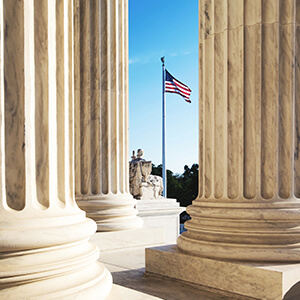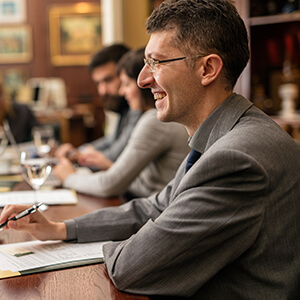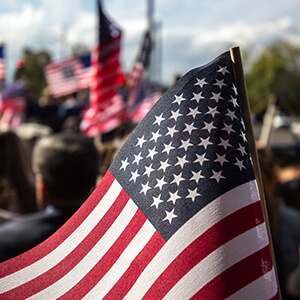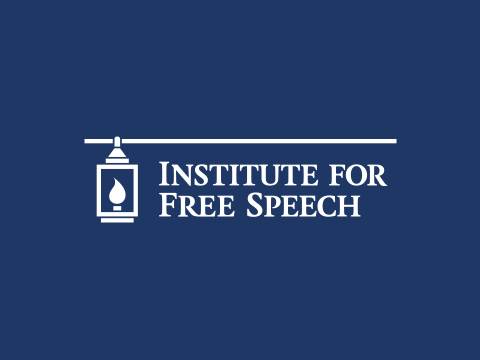Alexandria, VA – The Associated Press reported yesterday that a member of Congress who is deciding whether to run for president indicated his support for eliminating contribution limits to candidates. Below is a backgrounder for interested parties in the media with the strongest arguments for eliminating contribution limits to candidates:
I. Contribution limits violate the spirit of the First Amendment. Contribution limits stand in stark conflict with the First Amendment’s guarantee that “Congress shall make no law… abridging the freedom of speech….” First Amendment principles reject the notion that government should decide who speaks, how much, and with whom. Yet contribution limits do just that, imposing direct restrictions on the ability of citizens to associate with each other and with candidates or parties, and on their ability to speak. The less money that can be contributed to a candidate or party, the less money the campaigns have to buy communications to voters.
II. Limits give a speech advantage to independent groups and penalize candidates and political parties. Individuals donate to political campaigns to express their support for a candidate or party. Contribution limits on giving to candidates and parties do nothing to deter individuals from wanting to express this support; they merely shift these donations to independent groups, to which donations cannot be limited as a matter of law. As such, limits have the unintended consequence of increasing donations to independent groups at the expense of candidates and political parties. As the Supreme Court has found that it is unconstitutional to limit contributions to and expenditures from independent groups, contribution limits place candidates and parties at a permanent disadvantage.
III. Four of the ten least corrupt states (Oregon, Nebraska, Utah, and Iowa) in the country impose no limits on individual giving to statewide and legislative candidates. Contribution limits have not been shown to reduce corruption in states that impose them. The Center for Competitive Politics compared contribution limits on individuals in all 50 states to public corruption data and found no relationship between the existence of contribution limits and a state’s corruption rate.[1] Another academic study even found that “making the amount of money that can be [donated] smaller actually increased the likelihood of corruption.”[2]
IV. Of the 13 best managed states in the country, seven (Utah, Virginia, Missouri, Texas, Nebraska, Indiana, and Iowa) have no limits on individual giving to candidates. There is no evidence that contribution limits improve the quality of governance. After comparing Governing magazine’s ranking of all 50 states on the quality of their governance with whether a state has either no or high, moderate, or low contribution limits on individual giving to candidates, we found no correlation. To the extent there is a correlation, the states with no limits at all ranked highest. Moreover, Utah and Virginia, two of the top three states – and the only three states to achieve “A-” grades in Governing’s rankings – have no limits at all on the size or source of campaign contributions.[3]
V. Two of the top three and four of the top ten best managed states have no limits on giving to candidates by corporations and unions. Restrictions on corporate and union giving have not been found to improve the quality of governance. Most states treat limits on corporate and union giving to candidates differently than limits imposed on individuals giving to candidates. Historically, many states have either placed more restrictive limits, or prohibited altogether, corporations and unions from contributing to candidates. However, 29 states allow corporations to give directly to candidates, and 34 states allow unions to donate to candidates. Ultimately, research reveals little difference in the quality of government management between states that restrict, or ban, corporate and union giving to candidates and states that allow these entities to donate directly to candidates. In fact, there is no correlation between limits or bans on corporate and union giving to candidates and the quality of a state’s government management.[4]
VI. There is no link between campaign contributions and legislative influence. Contribution limits do not decrease the legislative influence of corporations, labor unions, and wealthy donors. Political scientists have found that “campaign contributions had no statistically significant effects on legislation….”[5]Ironically, as discussed previously, limits tend to divert money away from candidates’ campaign committees and into independent groups like Super PACs.
VII. Contribution limits serve to benefit the status quo and hamper new ideas. Limits also benefit incumbents and disadvantage challengers. By nature of their office, incumbent politicians have established donor lists, name recognition, media access, franking privileges, and myriad other advantages unavailable to their electoral challengers. Challengers often require great funding to compete with incumbent politicians and overcome these advantages. By capping what supportive donors can give to a campaign, contribution limits prevent challengers from amassing the funding they need to wage a competitive election against an entrenched incumbent.
One excellent example of an absence of contribution limits allowing new policy ideas to gain prominence came in the late Sixties, before contribution limits were imposed on giving to federal candidates. In late November 1967, Minnesota Senator Eugene McCarthy challenged President Lyndon Johnson for the Democratic nomination with a platform opposing the war in Vietnam. At first, people thought McCarthy’s campaign would be quixotic. But with no contribution limits, Senator McCarthy raised $10 million in today’s dollars from a handful of donors who shared his opposition to the war. McCarthy not only forced President Johnson out of the race (a feat not duplicated since the enactment of contribution limits), but also helped change the national debate about the Vietnam War.
VIII. Contribution limits hurt the ability of certain groups, like the elderly and small business owners, to support candidates. Limits do not “level the playing field,” as is often said, but rather distort it in other directions. All political activity/activism can be divided into two categories (which sometimes overlap): contributions of time and contributions of money. Volunteering activities, for example, are clearly time contributions, whereas donations to political campaigns are clearly financial contributions. Some volunteer activities are highly valuable, such as a free performance by a popular musician at a fundraising concert. Contribution limits naturally restrict financial contributions, lending greater influence to groups and individuals who are able to invest time in political activities free of charge. Thus, contribution limits may benefit volunteer or low-budget advocacy activities, but may hurt groups of elderly individuals or entrepreneurs, who may have the financial capability, but lack the fame, health, or time to meaningfully engage in volunteer activities.[6] Although contribution limits are often improperly instituted to “level the playing field,” they are likely only to shift influence from one group or person to another.
IX. The New York Times and famous celebrities, like Oprah Winfrey, should not have a greater “right to speak” than other Americans. Contribution limits restrict the speech of some citizens in order to enhance the speech of others, an idea held by the Supreme Court in Buckley v. Valeo to be “wholly foreign to the First Amendment.”[7]The oft-cited goal of limits on political contributions is to “level the playing field” of political influence. As discussed above, the actual effects of limits are very different. Such limits give advantages to large media corporations and celebrities. However, even the goal is predicated on a belief that runs contrary to the very essence of the First Amendment: that each member of society has a positive right to be heard, rather than a negative right not to be restricted from speaking by the government. The notion of positive liberty underlies the claim that some elements of society, whose voices are believed to be less-heard or not well-enough heard, have a right to be enhanced through affirmative government action by denying speech to those who “crowd” them out. As a constitutional matter, this “is exactly what the First Amendment prohibits when free speech is at stake.”[8]
________________________________________
[1] Matt Nese and Luke Wachob, “Do Lower Contribution Limits Decrease Public Corruption?,” Center for Competitive Politics’ Issue Analysis No. 5. Retrieved on July 18, 2014. Available at: https://www.ifs.org/wp-content/uploads/2013/08/2013-08-01_Issue-Analysis-5_Do-Lower-Contribution-Limits-Decrease-Public-Corruption1.pdf (August 2013).
[2] Philip M. Nichols, “The Perverse Effect of Campaign Contribution Limits: Making the Amount of Money that can be Offered Smaller Increases the Likelihood of Corruption in the Federal Legislature,” The Wharton School of the University of Pennsylvania. Retrieved on July 18, 2014. Available at: http://works.bepress.com/cgi/viewcontent.cgi?article=1001&context=philip_nichols (April 2008), p. 25.
[3] Matt Nese and Luke Wachob, “Do Lower Contribution Limits Produce ‘Good’ Government?,” Center for Competitive Politics’ Issue Analysis No. 6. Retrieved on July 18, 2014. Available at: https://www.ifs.org/wp-content/uploads/2013/10/2013-10-08_Issue-Analysis-6_Do-Lower-Contribution-Limits-Produce-Good-Government1.pdf (October 2013). No states received a grade of “A” in Governing’s rankings.
[4] Matt Nese, “Do Limits on Corporate and Union Giving to Candidates Lead to ‘Good’ Government?,” Center for Competitive Politics’ Issue Analysis No. 7. Retrieved on July 18, 2014. Available at: https://www.ifs.org/wp-content/uploads/2013/11/2013-11-20_Issue-Analysis-7_Do-Limits-On-Corporate-And-Union-Giving-To-Candidates-Lead-To-Good-Government.pdf (November 2013).
[5] Stephen Ansolabehere, John M. de Figueiredo, and James M. Snyder Jr., “Why is There so Little Money in U.S. Politics?,” Journal of Economic Perspectives, Vol. 17:1. Retrieved on July 18, 2014. Available at: http://tinyurl.com/nlvrun9 (Winter 2003), p. 17.
[6] Bradley A. Smith, Unfree Speech, Princeton University Press (2001), p. 120.
[7] Buckley v. Valeo, 424 U.S. 1, 48-49 (1976).
[8] Ibid. 6, p. 142.












